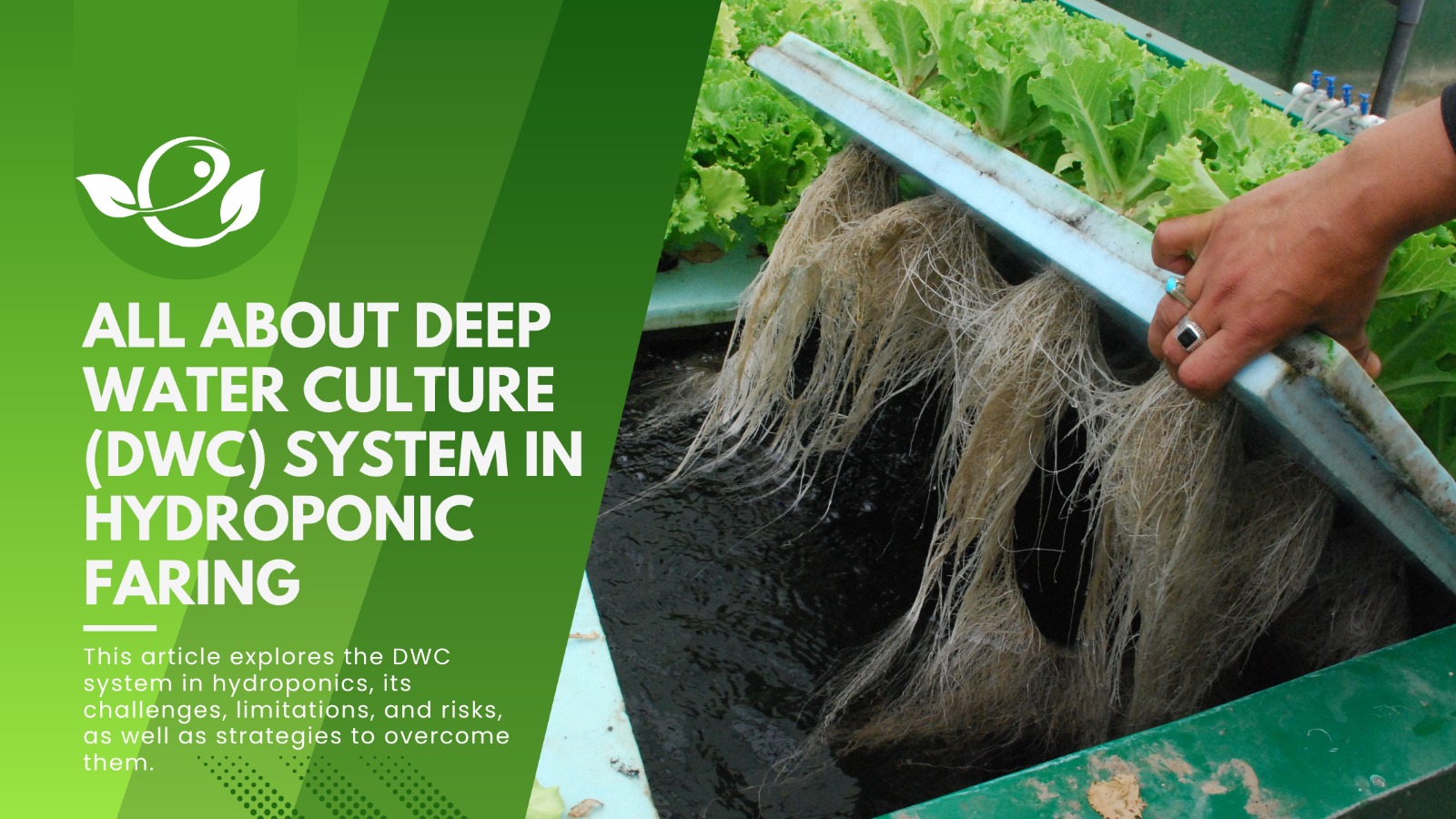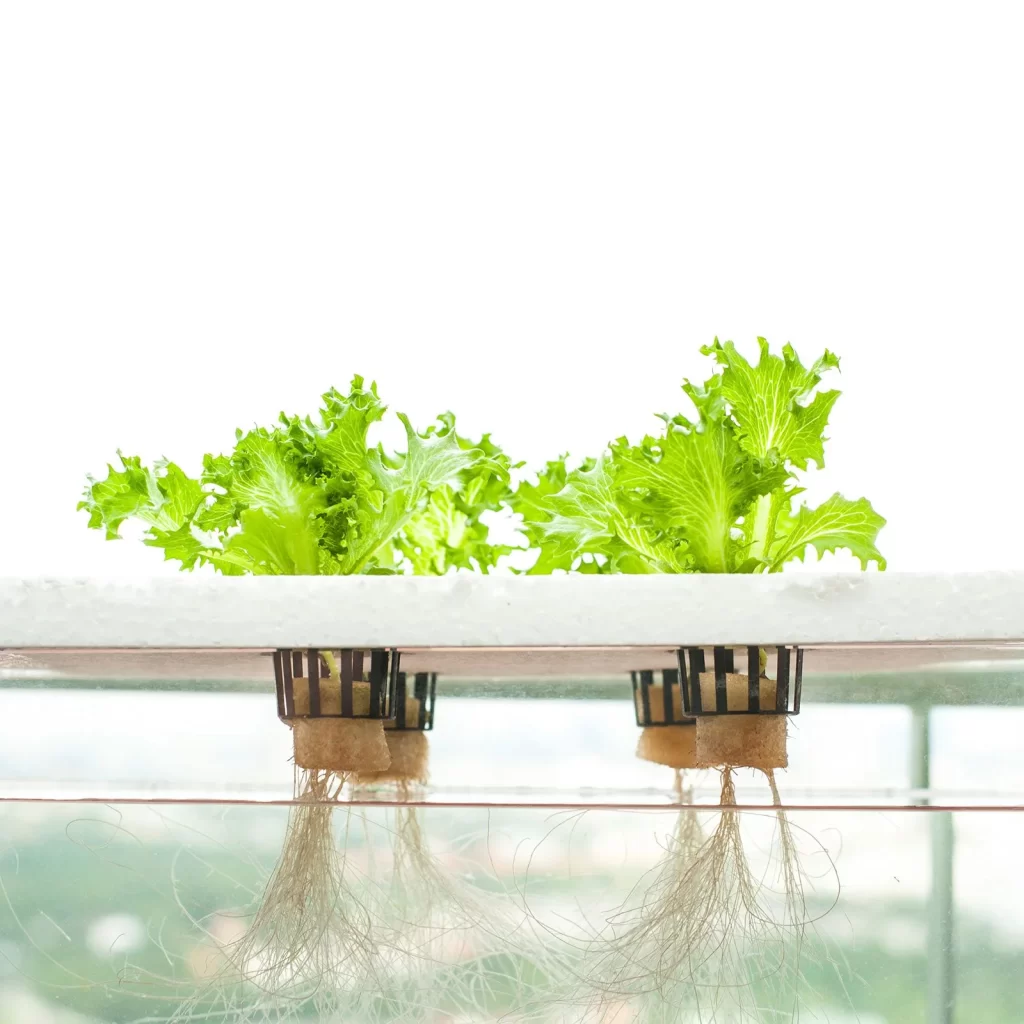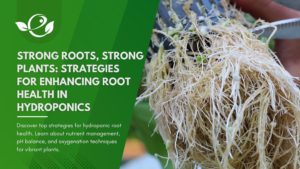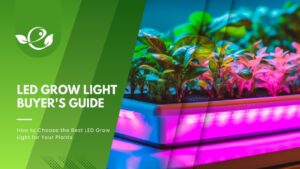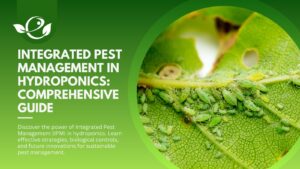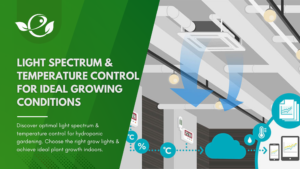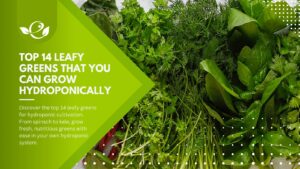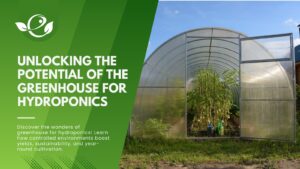Table of Contents
If you’re looking for a simple and efficient way to grow plants hydroponically, Deep Water Culture is an excellent option to consider. It stands out due to its simplicity, faster plant growth, higher yields, and lower maintenance requirements. In this comprehensive guide, we will explore the ins and outs of DWC, including its definition, how it works, its benefits and downsides, variations, common questions, and troubleshooting. By the end, you’ll have a solid understanding of DWC and be ready to embark on your hydroponic gardening journey.
Definition and Basic Concept of DWC
Deep Water Culture is a hydroponic technique that involves suspending plant roots in a nutrient-rich, oxygenated water solution. It is a popular and effective method for growing plants without the use of soil. In this system, plants are typically grown in netted pots or baskets, allowing their roots to dangle into the nutrient solution.
The basic concept of this system revolves around providing plants with direct access to water, nutrients, and oxygen. The roots are submerged in the oxygenated water solution, which is continuously aerated to ensure a sufficient oxygen supply. This oxygenation is often achieved by using air stones or diffusers that release tiny air bubbles into the nutrient solution.
One of the distinguishing features of DWC is the absence of a traditional growing medium like soil or coco coir. Instead, the plant roots are left to grow freely in the nutrient solution, absorbing water, nutrients, and oxygen as needed. This direct root contact with the nutrient-rich solution promotes efficient nutrient uptake and vigorous plant growth.
By eliminating the need for soil, this system offers several advantages. Firstly, it allows for faster plant growth compared to traditional soil-based gardening, as plants can readily access the essential elements they need for growth. Secondly, This system tends to yield higher harvests due to the optimized nutrient delivery and oxygenation. Lastly, it requires lower maintenance compared to soil gardening, as there are no soil-related issues like pests, diseases, or weed competition.
While the basic concept of DWC remains consistent, variations of the technique have emerged. For example, some growers implement recirculating systems, where the nutrient solution is continuously recirculated to improve resource utilization. Another variation is “Bubbleponics,” which combines DWC with a continuous flow of nutrient solution, further enhancing aeration and nutrient absorption.
This system is widely utilized by both home gardeners and commercial growers due to its simplicity, efficiency, and versatility. It offers a controlled and optimized environment for plants to thrive, making it a popular choice for hydroponics gardening enthusiasts.
How Does The Deep Water Culture Work?
This system operates by suspending plants above the nutrient solution, allowing their roots to absorb water, nutrients, and oxygen as needed. This setup facilitates direct access to the necessary resources for optimal growth. An essential element of DWC is aeration, which ensures an ample oxygen supply to the roots. This is typically achieved through the use of an air pump and air stone, which promote efficient oxygenation of the nutrient solution.
The basic setup of a deep water culture system consists of a reservoir, an air pump, an air stone or diffuser, a growing tray, and net pots to hold the plants. Here’s how it works:
Reservoir:
This is a container that holds the nutrient solution. It is usually made of plastic and needs to be lightproof to prevent the growth of algae and other light-sensitive organisms.
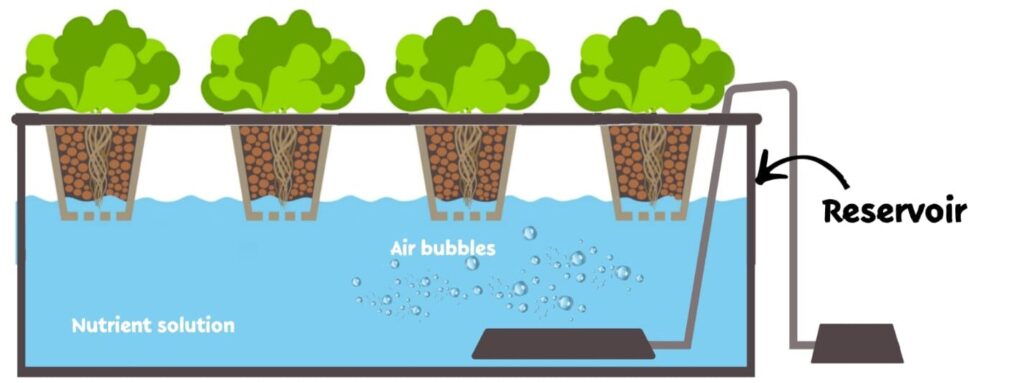
Air Pump and Air Stone/Diffuser:
An air pump is used to provide oxygen to the nutrient solution. It is connected to an air stone or diffuser, which releases tiny bubbles into the water, increasing oxygen levels for the roots.

Growing Tray:
The growing tray is usually placed on top of the reservoir and holds the plants. It is designed to support the net pots and allow the roots to hang freely into the water below.
Net Pots:
Net pots are containers with holes or mesh bottoms that hold the plant’s root system. These pots allow the roots to access the nutrient-rich water while providing support to the plant.
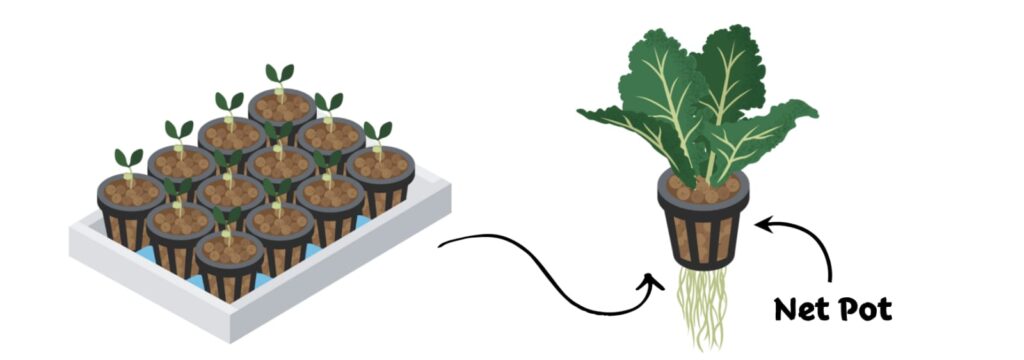
Nutrient Solution:
The nutrient solution is a mix of water and a balanced blend of essential minerals and nutrients needed for plant growth. It is constantly circulated and oxygenated by the air stone or diffuser.
| Know more about “Hydroponic Nutrient Solution: The Ultimate Guide“ |
Oxygenation:
The continuous oxygen flow into the nutrient solution helps prevent the roots from suffocating and promotes healthy growth. Adequate oxygen levels are essential for root respiration and nutrient uptake.
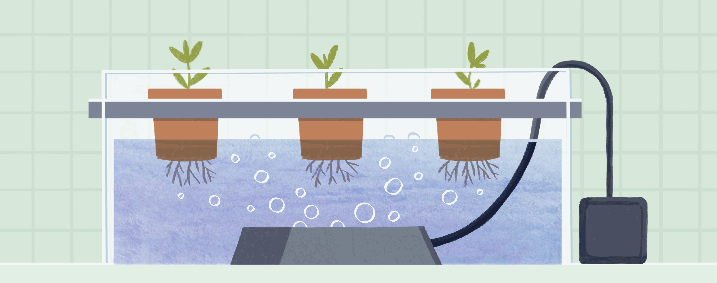
Types of Deep Water Culture
It can be customized to suit different preferences and goals. Here are two common variations:
Recirculating DWC:
This variation involves recirculating the nutrient solution in a closed-loop system. By continuously cycling the solution, growers can enhance resource utilization and nutrient uptake by the plants. This approach is particularly beneficial for larger-scale operations where efficient nutrient distribution is paramount.

Bubbleponics:
Bubbleponics combines the principles of DWC with a continuous flow of nutrient solution. In this variation, the nutrient solution is periodically pumped or dripped onto the plant roots, ensuring a constant supply of fresh oxygenated water. Bubbleponics can provide additional aeration and promote faster nutrient absorption, potentially leading to even higher growth rates and yields.
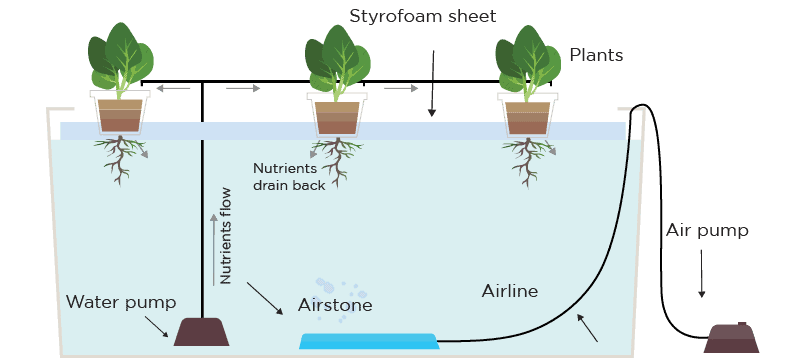
Which Plants Can Be Grown In DWC?
A wide variety of plants can be grown in Deep Water Culture systems. Here are some popular plant choices:
Leafy Greens:
Leafy greens like lettuce, spinach, kale, and Swiss chard thrive in this system. They have shallow root systems, making them well-suited for netted pots and allowing for easy nutrient uptake.
Herbs:
Herbs such as basil, mint, cilantro, parsley, and dill are commonly grown in DWC setups. They adapt well to hydroponic environments and can provide a fresh supply of flavorful herbs for culinary uses.
Tomatoes:
Tomatoes are well-suited for this system, especially compact or determinate varieties. With proper support and training, tomatoes can flourish, producing abundant fruits in a controlled hydroponic environment.
Peppers:
Both bell peppers and chilli peppers can be successfully grown in this system. These plants enjoy direct access to nutrients and oxygen, resulting in healthy foliage and bountiful harvests.

Cucumbers:
Cucumbers can thrive in these setups, especially compact or bush varieties. With adequate support, they can produce an abundant yield of fresh, crisp cucumbers for salads and snacks.
Strawberries:
Strawberries are well-suited for this system due to their compact growth habit and preference for well-drained conditions. With proper care and support for the trailing runners, strawberries can provide a delightful harvest of sweet berries.
Flowers:
Some flowering plants, such as marigolds, petunias, and nasturtiums, can be grown in this system for ornamental purposes. These colourful flowers can add beauty and vibrancy to your indoor or outdoor gardening space.
Microgreens:
Microgreens, including varieties like arugula, radish, and broccoli, are ideal for this system. Their short growth cycle and nutrient-dense leaves make them a popular choice for home growers.
It’s important to research the specific requirements of each plant variety, including light intensity, temperature, pH range, and nutrient concentration, to ensure optimal growth and yields. Experimenting with different plant species can be an exciting part of DWC gardening, so don’t hesitate to explore and discover new possibilities!
Benefits of DWC
There are several notable benefits to adopting a Deep Water Culture system:
Faster and More Vigorous Plant Growth:
Plants have direct access to nutrients and oxygen, which promotes accelerated growth compared to traditional soil gardening. The increased oxygen availability contributes to robust root development, leading to healthier and more vigorous plants.
Higher Yields:
Plants receive a constant supply of nutrients, allowing them to focus their energy on growth and productivity. As a result, DWC often leads to higher yields when compared to soil-based gardening.
Lower Maintenance Requirements:
These systems require reduced maintenance due to their self-watering nature. There is no need for frequent watering, and soil-related issues like pests and diseases are minimized or eliminated entirely. This makes DWC an attractive option for both novice and experienced gardeners looking for a low-maintenance hydroponic solution.
Versatility:
Deep Water Culture is adaptable to various settings, making it suitable for both home and commercial growers. Its scalability allows for efficient use of space and resources, making it an appealing choice for growers of all levels.
Downsides of DWC
While Deep Water Culture offers numerous advantages, it’s essential to be aware of potential challenges:
Regular Monitoring and Maintenance:
These systems require diligent monitoring and maintenance of the nutrient solution. It’s crucial to check pH and nutrient levels regularly to ensure optimal plant growth and prevent nutrient imbalances. Additionally, maintaining proper aeration and oxygen levels is essential for the health of the plant’s root system.
Maintaining pH and Nutrient Levels:
DWC relies on maintaining the correct pH range and nutrient concentrations. It’s important to monitor and adjust these levels as needed to prevent deficiencies or toxicities that may hinder plant growth.
| Know more about “The Importance of pH in Hydroponic Nutrient Solutions“ |
Conclusion
Deep Water Culture is a simple yet effective hydroponic technique that offers numerous benefits, including faster plant growth, higher yields, and lower maintenance requirements. By setting up a DWC system using the outlined components and guidelines, you can embark on your hydroponic gardening journey with confidence. Remember to regularly monitor pH and nutrient levels, maintain the nutrient solution, and select appropriate plants for optimal results. This hydroponic system opens up a world of possibilities for home and commercial growers alike, providing a versatile and efficient approach to hydroponic gardening.
We hope this comprehensive guide has equipped you with the knowledge and inspiration to explore DWC as a viable option for your hydroponic gardening endeavours. Happy growing!
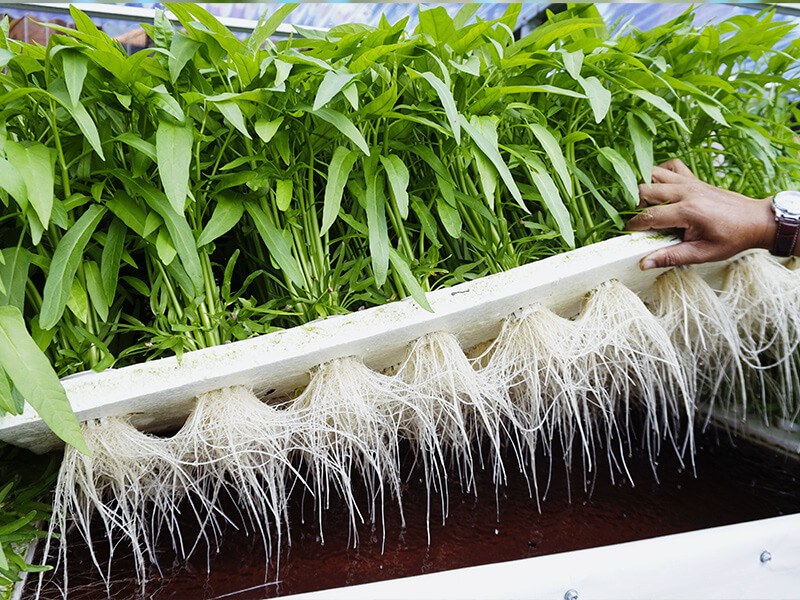
FAQ (Frequently Asked Questions)
1. Is DWC suitable for beginners?
Yes, it is a great option for beginners due to its simplicity and low maintenance requirements. With proper monitoring of pH and nutrient levels, beginners can achieve successful results in their hydroponic gardening endeavours.
2. Can DWC be used for large-scale commercial operations?
Absolutely! It is popular among commercial growers due to its scalability and efficient use of space and resources. With careful planning and implementation, This system can be adapted to meet the demands of large-scale production.
3. How often should I check and adjust the pH and nutrient levels in a DWC system?
It’s recommended to check the pH and nutrient levels at least once a week. However, depending on the specific plant requirements and environmental conditions, you may need to monitor and adjust the pH and nutrient levels more frequently.
4. What is the ideal temperature range for a DWC system?
The optimal temperature range for this system is typically between 65°F (18°C) and 75°F (24°C). Maintaining the nutrient solution within this range helps promote healthy root growth and nutrient absorption by the plants.
5. Can I grow plants with different nutrient requirements in the same DWC system?
While it is possible to grow plants with different nutrient requirements in the same DWC system, it can be challenging to provide the ideal conditions for each plant. It’s generally recommended to group plants with similar nutrient requirements together to ensure optimal growth and prevent nutrient imbalances.
6. How long does it take for plants to start growing in a DWC system?
Plants in this system typically start growing within a few days to a week, depending on the plant variety and environmental conditions. With direct access to nutrients and oxygen, plants often exhibit faster and more vigorous growth compared to traditional soil gardening.
7. Can DWC be used for flowering and fruiting plants?
Yes, it is suitable for flowering and fruiting plants. In fact, its efficient nutrient delivery system often results in enhanced flower development and fruit production. Just ensure that the nutrient solution is adjusted to meet the specific nutrient requirements of flowering and fruiting plants.
8. How do I prevent algae growth in a DWC system?
To prevent algae growth in a system, it’s essential to keep the reservoir lightproof. Algae thrive in the presence of light, so using opaque containers or covering the reservoir with a lightproof material can help minimize algae growth. Regular cleaning of the system and avoiding excessive exposure to sunlight can also prevent algae formation.
9. Can I use DWC for growing herbs and vegetables indoors?
Absolutely! It is an excellent choice for growing herbs and vegetables indoors. Its low maintenance requirements, efficient nutrient delivery, and compact footprint make it an ideal option for indoor gardening enthusiasts.
10. Can DWC be used for various types of plants?
Absolutely! It is suitable for a wide range of plants, including leafy greens, herbs, and flowering plants. From vibrant lettuce leaves to fragrant basil, this system allows you to cultivate a diverse array of crops.
If you have any additional questions or concerns regarding hydroponic gardening, feel free to reach out to us for further assistance.
Disclaimer: The information provided in this article is for educational purposes only. Consult local experts and reputable sources before implementing any hydroponic system or making significant changes to your gardening practices.
